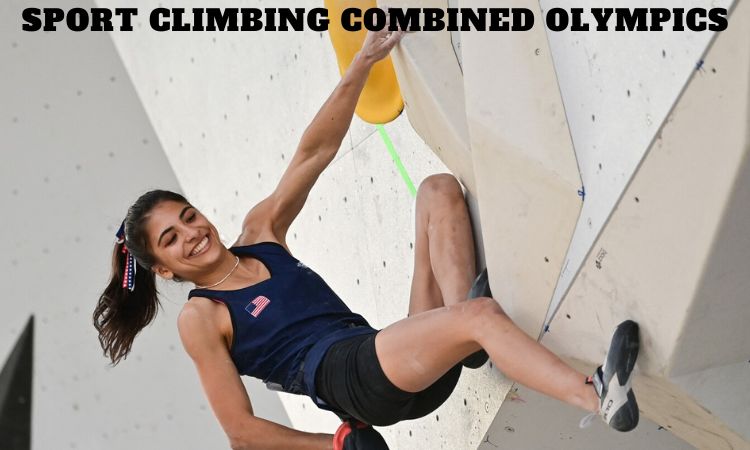
Sport climbing has emerged as a thrilling and dynamic sport, captivating the attention of athletes and audiences alike. Its inclusion in the Sport Climbing Combined Olympics has not only elevated the sport’s status but also provided a global stage for climbers to showcase their skills, agility, and strength. This article delves into the intricacies of sport climbing, the evolution of the combined format, and its impact on the Olympics and the climbing community.
What is Sport Climbing?
Sport climbing is a form of rock climbing that involves climbing artificial walls with the use of fixed anchors. Unlike traditional climbing, sport climbing emphasizes the physical and technical aspects of climbing, with less focus on the risks associated with outdoor climbing. The sport is divided into three main disciplines:
- Lead Climbing: Climbers ascend a route while clipping their rope into quickdraws along the way. The goal is to climb as high as possible within a set time.
- Bouldering: Climbers tackle short, but challenging routes (known as problems) without the use of ropes, relying on mats below for safety.
- Speed Climbing: As the name suggests, climbers race against each other to ascend a standardized route in the shortest time possible.
Each of these disciplines requires a unique set of skills, from endurance and strength in lead climbing to power and precision in bouldering, and explosive speed in speed climbing.
The Introduction of Sport Climbing in the Olympics
The journey of sport climbing to the Sport Climbing Combined Olympics began in earnest when the International Federation of Sport Climbing (IFSC) successfully lobbied for the sport’s inclusion in the 2020 Tokyo Olympics. This marked a significant milestone for the climbing community, as it was the first time the sport was recognized on such a prestigious international stage.
The format chosen for the Olympics was the “Combined” format, where athletes would compete in all three disciplines—lead climbing, bouldering, and speed climbing—with their final rankings based on a combined score. This format was met with mixed reactions from the climbing community, as it required athletes to excel in all three disciplines, which was a considerable challenge, given that most climbers typically specialize in one or two areas.
Challenges and Criticisms of the Combined Format
While the inclusion of sport climbing in the Olympics was a historic achievement, the combined format faced several criticisms. One of the primary concerns was that the format did not accurately reflect the nature of the sport. Traditionally, climbers specialize in either lead climbing, bouldering, or speed climbing, and very few athletes are proficient in all three disciplines. As a result, the combined format was seen as a compromise that favored versatility over specialization.
Moreover, the inclusion of speed climbing in the combined format was particularly contentious. Speed climbing is often viewed as a separate discipline, with a different skill set compared to lead climbing and bouldering. Critics argued that combining speed climbing with the other two disciplines diluted the essence of the sport and placed athletes who excelled in lead and bouldering at a disadvantage.
Despite these challenges, the combined format was retained for the 2020 Tokyo Olympics, with the understanding that it was a stepping stone towards a more refined format in future Olympic Games.
Notable Performances in the Sport Climbing Combined Olympics
The 2020 Tokyo Olympics saw some of the world’s top climbers compete in the sport climbing combined event. One of the most memorable performances was by Czech climber Adam Ondra, widely regarded as one of the best climbers in the world. While Ondra excelled in lead climbing and bouldering, his lack of speed climbing expertise hindered his overall ranking, highlighting the challenges posed by the combined format.
Another standout performance came from Janja Garnbret of Slovenia, who dominated the women’s competition. Garnbret’s exceptional skills in bouldering and lead climbing, combined with a respectable performance in speed climbing, secured her the gold medal. Her victory was a testament to her versatility and adaptability, qualities that are crucial in the combined format.
The Future of Sport Climbing in the Olympics
The success and challenges of the sport climbing combined event at the Tokyo Olympics have sparked discussions about the future of the sport in the Olympics. In response to feedback from athletes and the climbing community, the IFSC proposed changes to the format for the 2024 Paris Olympics. The new format will feature two separate events: one for speed climbing and another combined event for lead climbing and bouldering. This change is expected to provide a more accurate representation of the sport and allow athletes to showcase their skills in their preferred disciplines.
The decision to separate speed climbing from the combined event has been widely welcomed by the climbing community. It addresses the concerns raised about the combined format and ensures that the Olympics better reflect the diversity of the sport. Additionally, the introduction of two separate events increases the number of medals available, providing more opportunities for athletes to compete and succeed on the Olympic stage.
Impact on the Climbing Community
The inclusion of sport climbing in the Olympics has had a profound impact on the climbing community. The sport has gained increased visibility and recognition, attracting a new generation of climbers and fans. The Olympic spotlight has also led to increased investment in climbing facilities and infrastructure, as well as greater media coverage and sponsorship opportunities for athletes.
Moreover, the Olympics have served as a platform for promoting the values of sport climbing, including resilience, problem-solving, and respect for the environment. The sport’s emphasis on mental and physical strength, combined with its strong community ethos, has resonated with audiences around the world.
The Sport Climbing Combined Olympics represents a significant milestone in the evolution of the sport. While the combined format posed challenges and sparked debates, it also highlighted the versatility and determination of the world’s best climbers. As the sport continues to evolve and adapt, the future of sport climbing in the Olympics looks promising, with new formats and opportunities for athletes to shine on the global stage.
For those who want to stay updated on the latest developments in sport climbing and learn more about how to enhance their website’s visibility, visit the link below.
Frequently Asked Questions (FAQs)
1. What is the Sport Climbing Combined Olympics?
Ans. The Sport Climbing Combined Olympics is an event where climbers compete in three disciplines: lead climbing, bouldering, and speed climbing. Their overall ranking is determined by a combined score from their performance in all three disciplines.
2. How does the scoring work in the Sport Climbing Combined Olympics?
Ans. Athletes receive a ranking in each of the three disciplines, and their final score is determined by multiplying these rankings together. The climber with the lowest combined score wins.
3. What are the three disciplines in the Sport Climbing Combined Olympics?
Ans. The three disciplines are:
- Lead Climbing: Climbers attempt to climb as high as possible on a long, difficult route within a time limit.
- Bouldering: Climbers solve short, complex routes called “problems” without ropes, relying on mats below for safety.
- Speed Climbing: Climbers race against each other to ascend a standardized route in the shortest time.
4. Why was the combined format chosen for the Olympics?
Ans. The combined format was chosen to showcase the versatility of sport climbers, as it requires athletes to excel in all three climbing disciplines. It was also a way to introduce the sport to the Olympic Games in a compact format.
5. Why was the inclusion of speed climbing in the combined format controversial?
Ans. Speed climbing is often seen as a separate discipline with a different skill set compared to lead climbing and bouldering. Many climbers specialize in one or two disciplines, so the inclusion of speed climbing in the combined format was seen as unfair by some, as it could disadvantage climbers who are strong in the other two disciplines.
6. How did the format change for the 2024 Paris Olympics?
Ans. For the 2024 Paris Olympics, the format was revised to separate speed climbing from the combined event. There will now be two distinct events: one for speed climbing and another combined event for lead climbing and bouldering.
7. Who were some standout athletes in the 2020 Tokyo Sport Climbing Combined Olympics?
Ans. Notable athletes included Adam Ondra of the Czech Republic, known for his lead climbing and bouldering skills, and Janja Garnbret of Slovenia, who won gold in the women’s competition due to her exceptional versatility across all three disciplines.
8. How has the inclusion of sport climbing in the Olympics impacted the sport?
Ans. The inclusion of sport climbing in the Olympics has increased the sport’s visibility, attracting new participants and fans. It has also led to greater investment in climbing facilities, media coverage, and sponsorship opportunities for athletes.
9. What qualities are important for success in the Sport Climbing Combined Olympics?
Ans. Success in the Sport Climbing Combined Olympics requires versatility, as climbers must be proficient in all three disciplines. It also demands physical strength, endurance, problem-solving skills, and mental resilience.
10. What is the future of sport climbing in the Olympics?
Ans. The future of sport climbing in the Olympics looks promising, with the sport continuing to evolve. The revised format for the 2024 Paris Olympics is expected to provide a more accurate representation of the sport, with separate events for speed climbing and a combined event for lead and bouldering.


